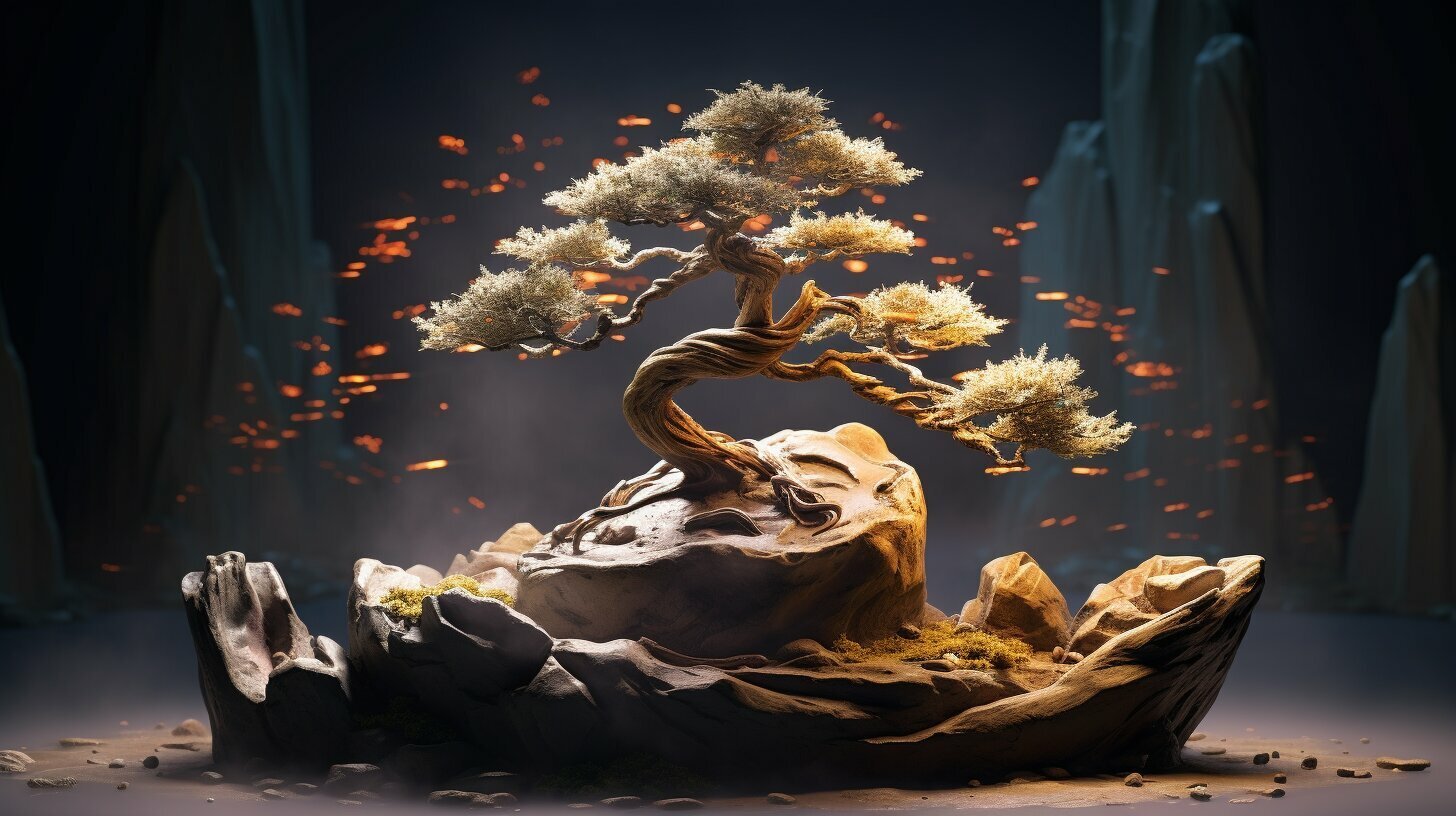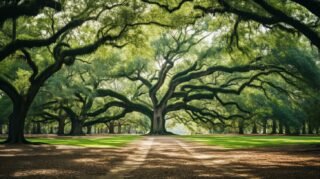Table of Contents
- The Art of Cedar Bonsai: A Brief Overview
- Cultivating Cedar Bonsai: Essential Care Tips
- Pruning Techniques for Cedar Bonsai Trees
- Styling Your Cedar Bonsai: Tips and Inspiration
- Indoor Cedar Bonsai Trees: Bringing Nature Inside
- Outdoor Cedar Bonsai Trees: Enhancing Your Outdoor Space
- Start Your Cedar Bonsai Journey Today!
- FAQ
Are you looking for a unique and visually stunning addition to your home or garden? Look no further than the beautiful cedar bonsai tree. These miniature trees offer a glimpse into the captivating world of bonsai and showcase the natural beauty of cedar trees in a new and compelling way.
Whether you are an experienced gardener or just starting out, cultivating a cedar bonsai tree is a rewarding and fulfilling experience. With a little care and attention, these trees can thrive both indoors and outdoors, bringing natural beauty and tranquility to any space.
Key Takeaways:
- Cedar bonsai trees offer a unique and visually stunning addition to any home or garden.
- Cultivating a cedar bonsai tree is a rewarding and fulfilling experience.
- With a little care and attention, cedar bonsai trees can thrive both indoors and outdoors.
The Art of Cedar Bonsai: A Brief Overview
Bonsai, the art of growing miniature trees in pots, has been practiced in Japan for centuries. Today, it is a popular hobby worldwide with a wide range of tree species suitable for cultivation as bonsai. Cedar trees, with their graceful and elegant growth patterns, are highly sought after for their unique charm and appeal as bonsai trees.
There are several species of cedar trees suitable for bonsai cultivation, including Eastern White Cedar, Japanese Cedar, and Himalayan Cedar. These trees are known for their delicate foliage and beautiful bark, making them ideal for creating both indoor and outdoor bonsai arrangements.
The Characteristics of Cedar Bonsai Trees
Cedar bonsai trees are characterized by their small size, intricate branches, and delicate foliage. They can be grown in a variety of styles, including informal upright, formal upright, cascade, and semi-cascade, providing endless possibilities for creating unique and visually appealing arrangements.
Cedar bonsai trees can be grown both indoors and outdoors, although outdoor cultivation is preferred for older and larger trees. They are adaptable to a range of soil conditions and tolerant of cold temperatures, making them ideal for beginners and experienced bonsai enthusiasts alike.
The Popularity of Cedar Bonsai Trees
Cedar bonsai trees are highly popular among bonsai enthusiasts due to their unique beauty and charm. They are easy to cultivate and maintain, and their delicate foliage and beautiful bark make them ideal for creating stunning and eye-catching arrangements.
Additionally, cedar bonsai trees are highly versatile and can be grown in a variety of styles, making them suitable for both indoor and outdoor cultivation. Whether you are a seasoned bonsai enthusiast or a beginner, a cedar bonsai tree is a must-have addition to any collection.
Cultivating Cedar Bonsai: Essential Care Tips
Cedar bonsai trees are a beautiful and unique addition to any space, whether indoor or outdoor. To ensure they thrive and maintain their beauty, proper care is essential. Here are some essential care tips for cultivating cedar bonsai trees:
| Aspect of Care | Tips |
|---|---|
| Watering | Cedar bonsai trees require regular and consistent watering to maintain their health. Ensure that the soil is sufficiently moist, but not overly saturated. Avoid letting the soil dry out completely, as this can cause stress and damage to the tree. Watering frequency and amount will depend on factors such as the size of the tree and the environment in which it is kept. |
| Sunlight | Cedar bonsai trees require ample sunlight to grow and maintain their color and vitality. Ensure that they are placed in a location that receives direct sunlight for at least a few hours each day. Be mindful not to expose the tree to too much direct sunlight, as this can cause damage and dehydration. |
| Temperature | Cedar bonsai trees prefer moderate temperatures, ideally between 60-75°F. Avoid exposing the tree to extreme temperatures, either hot or cold, which can cause stress and damage. Consider using protective coverings or moving the tree indoors during periods of extreme temperature fluctuations. |
| Soil Conditions | Cedar bonsai trees require well-draining soil that is nutrient-rich. Be sure to use appropriate soil mixtures that contain a balance of organic and inorganic materials. Avoid using soil that is too heavy and retains too much moisture, as this can lead to root rot and other issues. |
| Maintenance | Regular maintenance is essential for the health and longevity of cedar bonsai trees. This can include tasks such as pruning, wiring, and repotting. Ensure that you have the proper tools and knowledge to carry out any maintenance tasks, or consider seeking assistance from a professional if necessary. |
By following these essential care tips, you can help ensure that your cedar bonsai tree remains healthy and beautiful for years to come. Remember to monitor your tree regularly and make adjustments as needed to provide the best environment and care.
Pruning Techniques for Cedar Bonsai Trees
Pruning is an essential practice in maintaining the desired shape and aesthetics of your cedar bonsai tree. In addition to shaping, pruning also promotes new growth and keeps the tree healthy and vigorous. Here are some tips for proper cedar bonsai pruning:
Timing
The best time to prune your cedar bonsai tree is during the early spring, just before the start of the new growing season. This is when the tree is most receptive to pruning and will recover quickly to produce new growth. Cedar trees grow slowly, so it’s important not to remove too much foliage in a single pruning session.
Tools
When pruning your cedar bonsai tree, it’s important to use sharp, clean tools. A dull blade can damage the tree and lead to disease or infection. Use a pair of sharp pruning shears for smaller branches and a concave cutter or saw for larger branches. Always sterilize your tools before use to prevent the spread of disease.
Techniques
When pruning your cedar bonsai tree, it’s important to focus on removing any dead, damaged, or overgrown branches. This will encourage the tree to produce new growth and maintain its overall shape. Start by removing any larger branches that are growing straight up or down. Then, move on to smaller branches, focusing on any that cross over or are growing in the wrong direction. Finally, trim the tips of the remaining branches to maintain the desired shape of the tree.
Branch Placement
When pruning your cedar bonsai tree, it’s important to consider the placement of each branch. The goal is to create a natural-looking tree that is well-balanced in terms of foliage distribution. Avoid pruning too much from the top of the tree, as this can result in a spindly appearance. Instead, focus on maintaining a balanced distribution of foliage across the entire tree.
Remember, pruning is an ongoing process that requires patience and attention to detail. By following these tips and techniques, you can help your cedar bonsai tree thrive and maintain its beauty for years to come.
Styling Your Cedar Bonsai: Tips and Inspiration
Cedar bonsai trees are beloved for their intricate and unique forms. Styling your cedar bonsai tree is an opportunity to showcase its natural beauty and create a one-of-a-kind arrangement. There are a variety of styles to choose from, each with their own distinct look and feel. Here are some tips and inspiration for styling your cedar bonsai tree.
Formal Upright Style
The formal upright style is one of the most classic bonsai styles. It features a straight, vertical trunk with branches that extend out horizontally at regular intervals. To achieve this style with your cedar bonsai tree, prune the top and bottom branches to encourage a straight trunk and evenly spaced branches.
Cascade Style
The cascade style is a dramatic and eye-catching option for cedar bonsai trees. It involves a trunk that curves downwards, with branches that extend upwards and outwards. This style can be achieved by bending the trunk downwards and securing it in place with wire. As the tree grows, continue to shape it to maintain the desired cascade form.
Informal Upright Style
The informal upright style is a more relaxed and natural option for cedar bonsai trees. It features a trunk that curves slightly, with branches that grow out in more random and varied patterns. This style can be achieved by pruning the branches to create a natural-looking shape and allowing the tree to grow in a more organic way.
Bonsai Forest Style
The bonsai forest style involves growing multiple cedar bonsai trees together to create a miniature forest. This style can be achieved by planting multiple trees in the same pot and shaping them to complement each other. It’s important to keep in mind the different heights and shapes of each tree to create a cohesive and visually appealing arrangement.
With these styling tips and inspiration, you can take your cedar bonsai tree to the next level and create a stunning and unique arrangement. Remember to be patient and take the time to carefully shape and prune your tree to achieve the desired form. Happy styling!
Indoor Cedar Bonsai Trees: Bringing Nature Inside
Cedar bonsai trees are a great addition to any indoor space. They not only bring a touch of nature inside, but they also offer a relaxing focal point for your home or office. Growing a cedar bonsai tree indoors requires a bit of extra care, but the results are worth it.
Choosing the right location: When growing cedar bonsai trees indoors, it’s important to place them in a location that receives plenty of bright, indirect light. A south-facing window is ideal, but be sure to protect the tree from direct sunlight, which can scorch the leaves.
Watering: Proper watering is key to the health of your indoor cedar bonsai tree. It’s important to keep the soil consistently moist, but not waterlogged. Make sure to check the soil daily, and water only when the top inch is dry to the touch.
Temperature and humidity: Cedar bonsai trees prefer cooler temperatures, so try to keep them in a location that doesn’t get too warm, such as near a drafty window or air conditioning vent. They also benefit from higher humidity levels, so consider using a humidifier or placing a tray of water near the tree.
Soil requirements: Cedar bonsai trees require loose, well-draining soil. Use a bonsai-specific mix, or create your own by mixing equal parts of perlite or vermiculite, peat moss, and coarse sand or grit.
Pruning: Regular pruning is necessary to maintain the shape and size of your indoor cedar bonsai tree. Use sharp, clean pruning shears, and be sure to sterilize them with rubbing alcohol between uses to prevent the spread of disease.
Fertilizing: Cedar bonsai trees require regular fertilization to ensure they receive the nutrients they need. Use a balanced fertilizer every two weeks during the growing season, and reduce to once a month during the winter months.
By following these essential care tips, you can enjoy the beauty and charm of a cedar bonsai tree in the comfort of your own home.
Outdoor Cedar Bonsai Trees: Enhancing Your Outdoor Space
One of the great joys of cultivating cedar bonsai trees is being able to incorporate them into your outdoor space. Designed to thrive in outdoor environments, cedar bonsai trees can be a beautiful addition to any garden, patio, or balcony.
Before introducing your cedar bonsai tree to the outdoors, it’s important to consider a few factors that can impact its growth and health. One of the most important factors is sunlight. Cedar bonsai trees require a lot of sunlight to grow and thrive, so be sure to choose a location with ample sunlight exposure.
Another factor to consider is wind. Strong winds can damage the delicate branches and leaves of your cedar bonsai tree, so it’s important to choose a sheltered location if your outdoor space is particularly windy. Additionally, seasonal considerations should be taken into account, such as frost and extreme temperatures.
When it comes to caring for your outdoor cedar bonsai tree, proper watering and soil conditions are essential. Be sure to water your tree regularly, and ensure that the soil is well-draining to prevent root rot.
Creating an Outdoor Cedar Bonsai Garden
One of the great things about outdoor cedar bonsai trees is their versatility. They can be incorporated into a variety of outdoor spaces, from small balconies to expansive gardens. Additionally, outdoor cedar bonsai trees can be styled in a variety of ways, from formal upright to cascade.
Consider creating a dedicated outdoor cedar bonsai garden, where you can showcase a variety of trees in different styles and arrangements. You can incorporate other elements such as rocks, gravel, and moss for a natural and serene aesthetic.
Overall, outdoor cedar bonsai trees offer a unique and visually stunning addition to any outdoor space. With proper care and consideration, they can thrive and enhance the beauty of your outdoor environment.
Start Your Cedar Bonsai Journey Today!
Are you ready to immerse yourself in the enchanting world of bonsai trees? Look no further than the captivating beauty of cedar bonsai trees.
Boasting delicate foliage, quirky shapes, and rich history, cedar bonsai trees make a stunning addition to any space. Whether you’re a seasoned gardener or a curious beginner, cultivating a cedar bonsai tree is sure to bring joy, relaxation, and a sense of accomplishment.
As we’ve explored in this article, cedar bonsai trees require specific care and pruning techniques, depending on whether they are grown indoors or outdoors. With regular attention and proper care, however, they are sure to thrive and bring beauty to your home or garden.
So, why not start your own cedar bonsai tree journey today? With endless possibilities for styling, shaping, and personalization, it’s an exciting and rewarding journey that’s waiting for you.
At the heart of it all, a cedar bonsai tree is a symbol of craftsmanship, patience, and natural beauty – a true masterpiece of the plant world. So, let’s get started and discover the magic of this captivating bonsai tree.
FAQ
Q: What are the care requirements for cedar bonsai trees?
A: Cedar bonsai trees require regular watering, preferably with filtered or rainwater. They thrive in bright, indirect sunlight and prefer temperatures between 60-75 degrees Fahrenheit. The soil should be well-draining, and fertilization should be done sparingly during the growing season.
Q: How often should I prune my cedar bonsai tree?
A: Pruning frequency for cedar bonsai trees depends on the desired shape and growth pattern. Generally, light pruning can be done throughout the year to maintain the desired form. More extensive pruning should be done during late winter or early spring, before new growth begins.
Q: Can I keep my cedar bonsai tree indoors?
A: While cedar bonsai trees can be kept indoors, they require specific conditions to thrive. They need bright, indirect sunlight and a cool, well-ventilated location. It’s important to monitor humidity levels and ensure proper air circulation to prevent issues such as fungal growth.
Q: How long do cedar bonsai trees live?
A: With proper care, cedar bonsai trees can live for many years, even decades. Some specimens have been known to survive for over a century. Regular maintenance, including watering, pruning, and protection from harsh environmental conditions, can contribute to the longevity of your tree.
Q: Can I wire my cedar bonsai for shaping?
A: Yes, wiring can be used to shape and style your cedar bonsai tree. However, caution should be exercised to avoid damage to the tree’s delicate branches. It’s essential to remove the wire before it cuts into the bark, usually within a few months of application.







